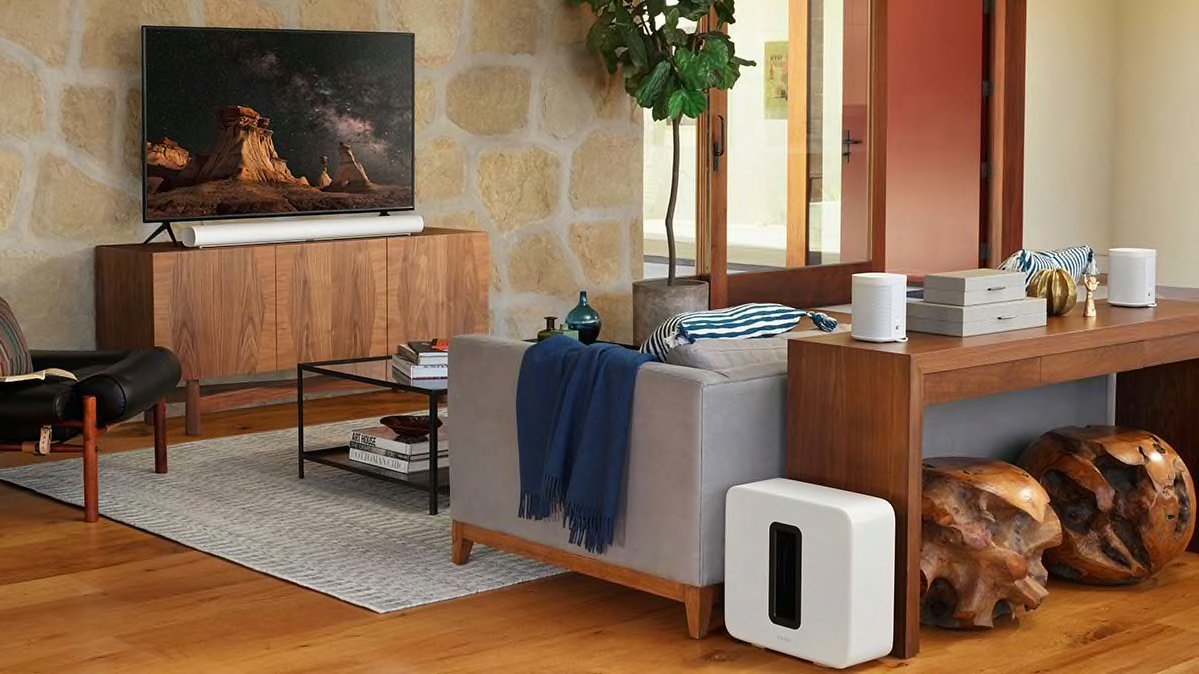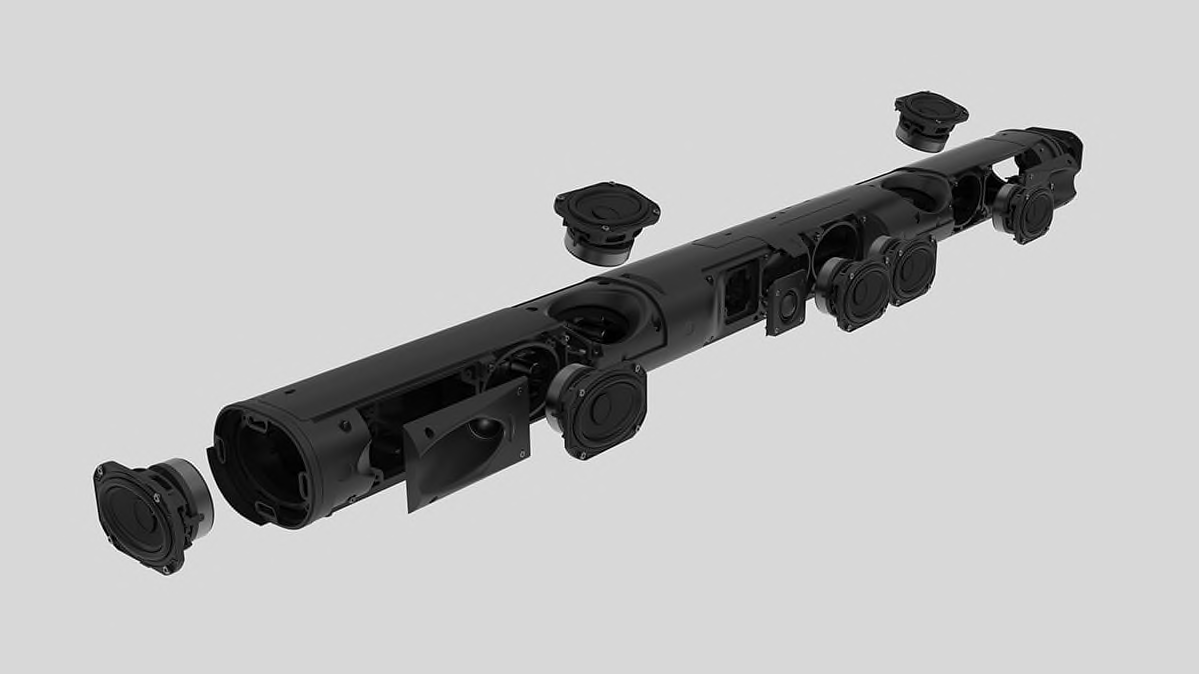
Almost two years after introducing its first smart sound bar, the Beam, Sonos is ratcheting up the volume in home theater with the Arc, the first Sonos sound bar to support Dolby Atmos sound, which adds an element of height to the surround-sound experience.
The Arc will cost $800 when it hits stores June 10, about $100 more than the two Sonos sound bars it's replacing, the Playbar and the Playbase. Like those models, the Sonos Arc can be paired with the Sonos Sub separate wireless subwoofer ($700), which is also getting an update.
The Arc can be preordered starting today through Sonos and participating retailers.
We're looking forward to testing the Arc, partly because Sonos models account for three of the top five speakers in our sound bar ratings. All have top-notch sound quality, plus a lot of versatility, because they can be paired with other Sonos wireless speakers as a full surround-sound system in a single room, or as a whole-home audio setup.
The Sonos Arc, at 45 inches long, is considerably bigger than the 36-inch Playbar and 28-inch Playbase. That reflects the fact that more people are buying bigger, 55- and 65-inch TVs, the company said during a press call with CR this week. The Arc has a new industrial design, with an oval shape and no sharp edges, a 270-degree wraparound grille, and a choice of white or black matte finish.

The stylish body encloses 11 separate drivers—eight elliptical woofers, including two that fire upward to produce Dolby Atmos sound when playing content that supports it, plus three angled tweeters. Like the Playbar, the Arc can be either wall-mounted or positioned below the TV on a media console or table, with the speaker's smarts detecting its orientation and automatically adjusting the sound for optimal audio quality. The Sonos software also adjusts the speaker's sound profile based on what's playing—stereo music, 5.1-channel surround sound, or Dolby Atmos sound.
Continuing a Sonos tradition, the Arc lacks a remote control. Instead, you control it using the Sonos app, your TV remote, or voice commands through Alexa or Google Assistant. With compatible iOS devices, you can use AirPlay 2 to send sound to the Arc, or use Siri to play songs from Apple Music, and control volume from an iPhone or iPad. An array of four far-field microphones is built into the speaker to pick up voice commands.

Updated Sonos App and Software
To coincide with the release of the Arc—and new versions of the Play:5 wireless speaker and Sonos Sub subwoofer (see below)—Sonos is releasing an updated version of the Sonos app, which will be available starting June 8. (If you have older Sonos speakers, you'll have to continue using the earlier version of the app for those models.) According to the company, the new app makes it easier to control sound and search for content, includes some improved security features, and adds support for higher-resolution audio technologies such as Dolby Atmos.
You can also use the app to tweak the sound via an adjustable equalizer, or tap into features such as Speech Enhancement to improve the clarity of dialog or a Night Sound mode that quiets louder sounds, such as explosions in action movies. The company has also updated its Trueplay tuning technology—which uses the microphone built into an iPhone or iPad to "tune" the speaker's sound to the room's size and acoustics—to account for the Dolby Atmos 3D sound.
One drawback of the Playbar and Playbase models was that they lacked HDMI inputs; you had to connect the sound using an optical audio input. The Arc supports both HDMI ARC—short for Audio Return Channel, which lets audio go back and forth from a TV to a sound bar or receiver using a single HDMI cable—and HDMI eARC, an enhanced version that's needed for Dolby Atmos and other higher-resolution audio formats.
New Sonos Five Speaker, Sonos Sub Update
Beyond the new Arc sound bar speaker, Sonos is updating its wireless Sonos Sub subwoofer, and replacing its Play:5 wireless speaker with a new model called the Sonos Five. The company says both have faster processors and better wireless radios but retain the classic Sonos sound.
Like most powered subwoofers, the new Sonos Sub (third generation), $700, can produce deeper bass than the sound bar speaker alone; when used with the Sonos Sub, the sound bar will automatically adjust its crossover frequencies, sending the lowest bass notes to the sub and letting its own woofers focus on reproducing midrange frequencies.
Like the Play:5 speaker it replaces, the new Sonos Five, $500, is a powered model—meaning it has its own built-in amplification—that can be used as a standalone speaker when placed horizontally, or paired in an upright position with another Five for a wider soundstage and better stereo separation. It's offered in either black with a black grille, or white with a white grille.
Both models also become available June 10 and can be preordered starting today either directly from Sonos or from a participating retailer.

















